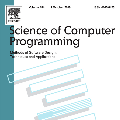The Reward-Penalty-Selection Problem (RPSP) can be seen as a combination of the Set Cover Problem (SCP) and the Hitting Set Problem (HSP). Given a set of elements, a set of reward sets, and a set of penalty sets, one tries to find a subset of elements such that as many reward sets as possible are covered, i.e. all elements are contained in the subset, and at the same time as few penalty sets as possible are hit, i.e. the intersection of the subset with the penalty set is non-empty. In this paper we define a cooperative game based on the RPSP where the elements of the RPSP are the players. We prove structural results and show that RPS games are convex, superadditive and totally balanced. Furthermore, the Shapley value can be computed in polynomial time. In addition to that, we provide a characterization of the core elements as a feasible flow in a network graph depending on the instance of the underlying RPSP. By using this characterization, a core element can be computed efficiently.
翻译:奖赏- 奖赏- 选择问题( RPSP) 可以被视为“ 一组覆盖问题 ” ( SCP) 和“ 击入问题 ” ( HSP ) 的组合。 根据一组元素、 一组奖赏组和一套惩罚组, 人们试图找到一组元素, 尽可能覆盖尽可能多的奖赏组, 即所有元素都包含在子集中, 并且同时尽可能少的处罚组被击中, 即子集与处罚组的交叉点并非空。 本文我们定义了一个基于 RPSP 的合作游戏, 即 RPSP 的元素是玩家。 我们证明结构结果并显示 RPS 游戏是共和的, 超叠加和完全平衡的。 此外, 可以在多球时计算其耗损值。 此外, 我们根据基础的 RPSP 实例在网络图中将核心元素定性为可行的流。 通过这一定性, 核心元素可以有效计算 。




